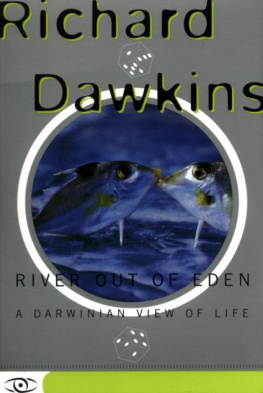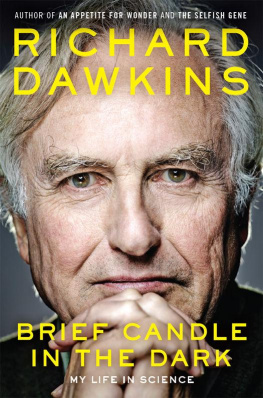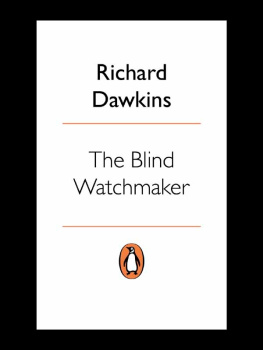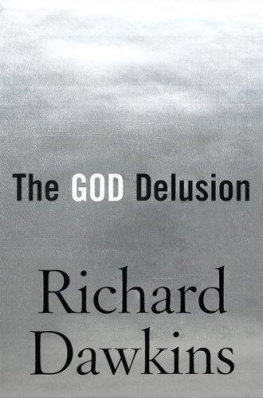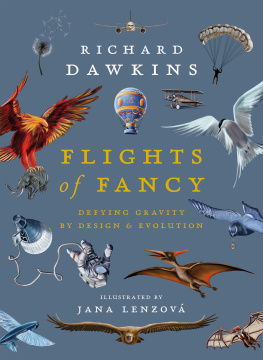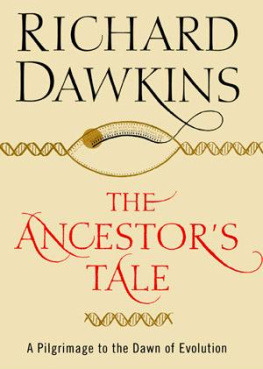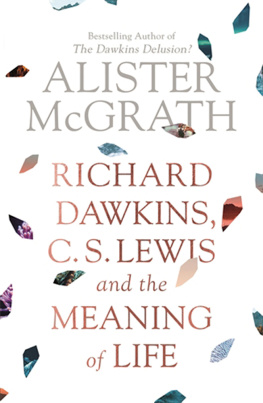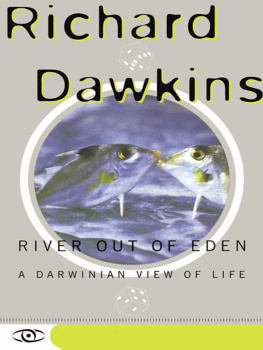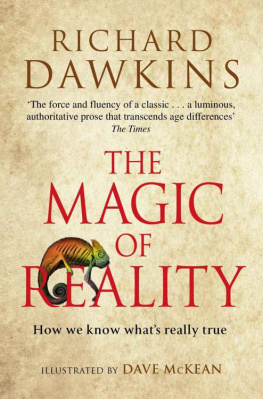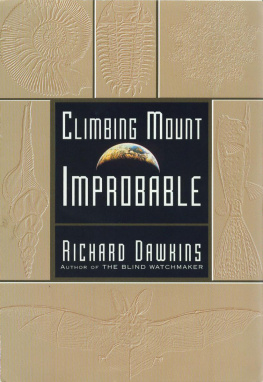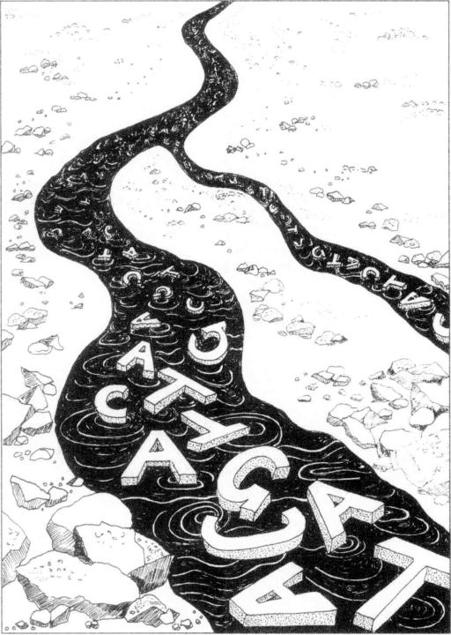






Otherbooksin THE SCIENCE MASTERS SERIES
The Periodic Kingdom
by P. W. Atkins
The Last Three Minutes
by Paul Davies
Nature's Numbers
by Ian Stuart
The Origin of Humankind
by Richard Leakey
The Origin of the Universe
by John D. Barrow
Kinds of Minds
by Daniel C. Dennett
How Brains Think
by William H. Calvin
To the memory of HENRY COLYEAR DAWKINS (1921-1992), Fellow of St. John's College, Oxford: a master of the art of making things clear.
And a river went out of Eden to water the garden.
-Genesis 2:10
CONTENTS
xi
PREFACE
Nature, it seems, is the popular name For milliards and milliards and milliards Of particles playing their infinite game Of billiards and billiards and billiards.
-Piet Hein
Piet Hein captures the classically pristine world of physics. But when the ricochets of atomic billiards chance to put together an object that has a certain, seemingly innocent property, something momentous happens in the universe. That property is an ability to self-replicate; that is, the object is able to use the surrounding materials to make exact copies of itself, including replicas of such minor flaws in copying as may occasionally arise. What will follow from this singular occurrence, anywhere in the universe, is Darwinian selection and hence the baroque extravaganza that, on this planet, we call life. Never were so many facts explained by so few assumptions. Not only does the Darwinian theory command superabundant power to explain. Its economy in doing so has a sinewy elegance, a poetic beauty that outclasses even the most haunting of the world's origin myths. One of my purposes in writing this book has been to accord due recognition to the inspirational quality of our modern understanding of Darwinian life. There is more poetry in Mitochondrial Eve than in her mythological namesake.
The feature of life that, in David Hume's words, most "ravishes into admiration all men who have ever contemplated it" is the complex detail with which its mechanisms-the mechanisms that Charles Darwin called "organs of extreme perfection and complication"-fulfill an apparent purpose. The other feature of earthly life that impresses us is its luxuriant diversity: as measured by estimates of species numbers, there are some tens of millions of different ways of making a living. Another of my purposes is to convince my readers that "ways of making a living" is synonymous with "ways of passing DNA-coded texts on to the future." My "river" is a river of DNA, flowing and branching through geological time, and the metaphor of steep banks confining each species' genetic games turns out to be a surprisingly powerful and helpful explanatory device.
In one way or another, all my books have been devoted to expounding and exploring the almost limitless power of the Darwinian principle-power unleashed whenever and wherever there is enough time for the consequences of primordial self-replication to unfold. River Out of Eden continues this mission and brings to an extraterrestrial climax the story of the repercussions that can ensue when the phenomenon of replicators is injected into the hitherto humble game of atomic billiards.
During the writing of this book I have enjoyed support, encouragement, advice and constructive criticism in varying combinations from Michael Birkett, John Brockman, Steve Davies, Daniel Dennett, John Krebs, Sara Lippincott, Jerry Lyons, and especially my wife, Lalla Ward, who also did the drawings. Some paragraphs here and there are reworked from articles that have appeared elsewhere. The passages of chapter 1 on digital and analog codes are based on my article in The Spectator of June 11, 1994. Chapter 3's account of Dan Nilsson and Susanne Pelger's work on the evolution of the eye is partly taken from my "News and Views" article published in Nature on April 21, 1994. I acknowledge the editors of both these journals, who commissioned the articles concerned. Finally, I am grateful to John Brockman and Anthony Cheetham for the original invitation to join The Science Masters Series.
Oxford, 1994
RIVER OUT OF EDEN
CHAPTER I
THE DIGITAL RIVER
All peoples have epic legends about their tribal ancestors, and these legends often formalize themselves into religious cults. People revere and even worship their ancestors-as well they might, for it is real ancestors, not supernatural gods, that hold the key to understanding life. Of all organisms born, the majority die before they come of age. Of the minority that survive and breed, an even smaller minority will have a descendant alive a thousand generations hence. This tiny minority of a minority, this progenitorial elite, is all that future generations will be able to call ancestral. Ancestors are rare, descendants are common.

